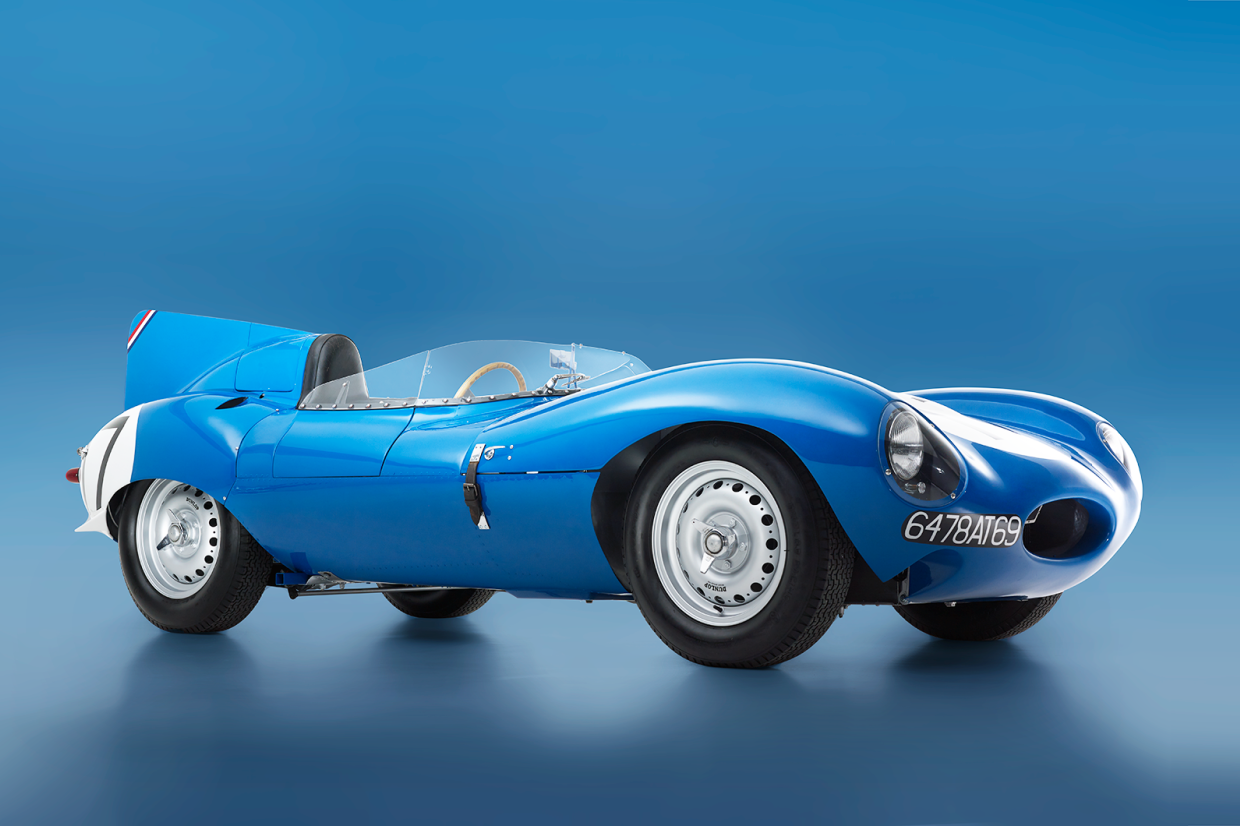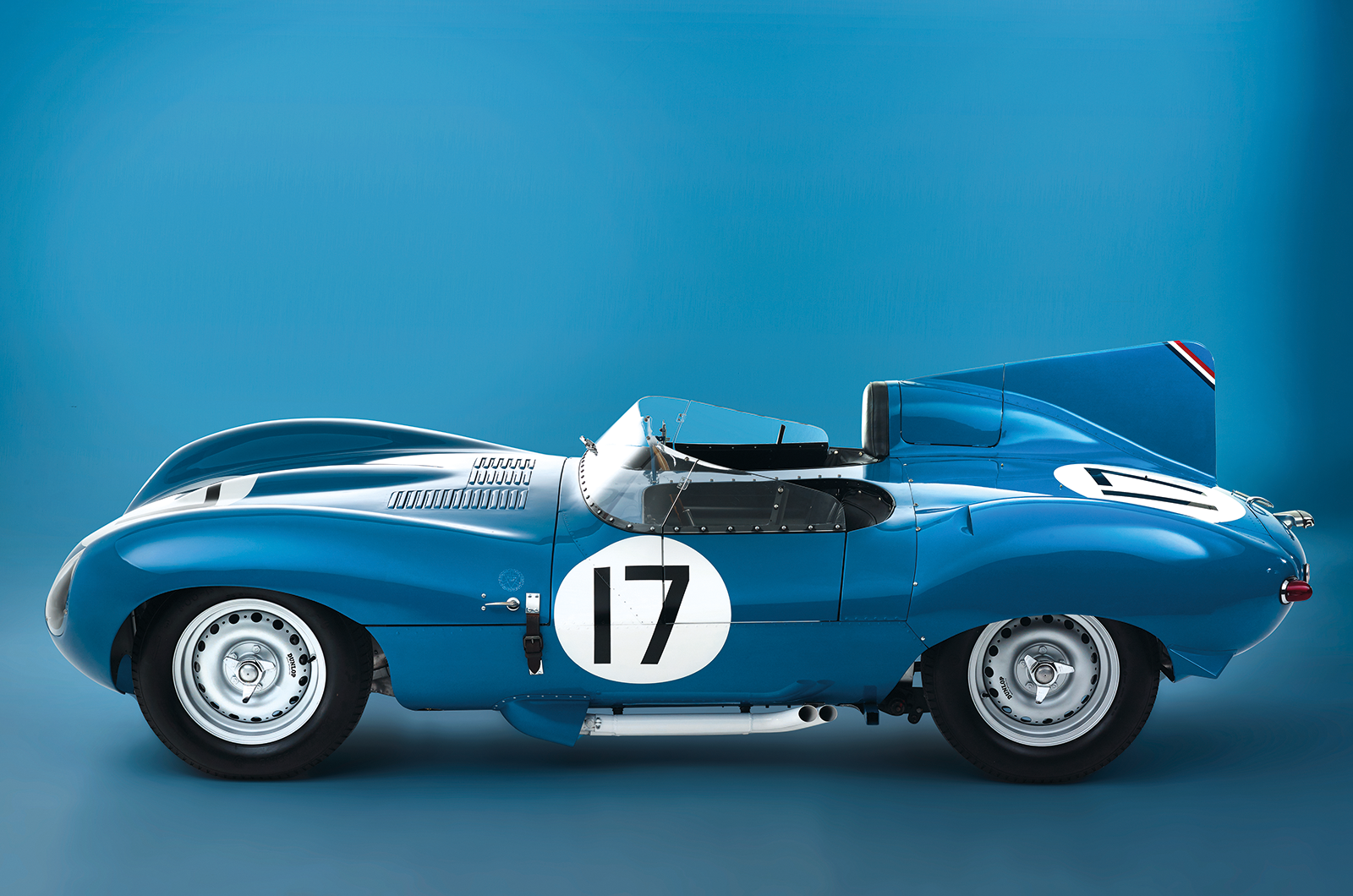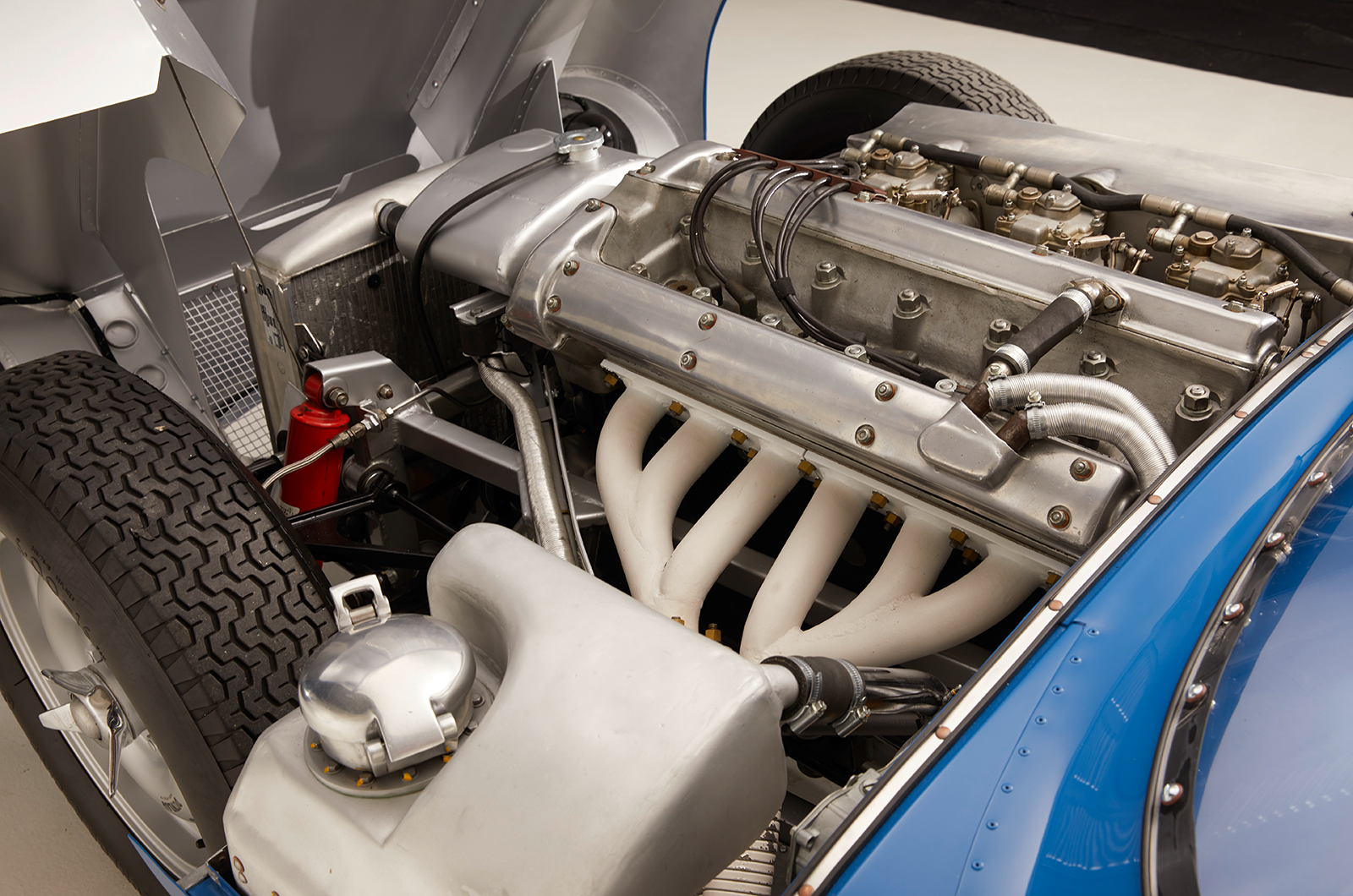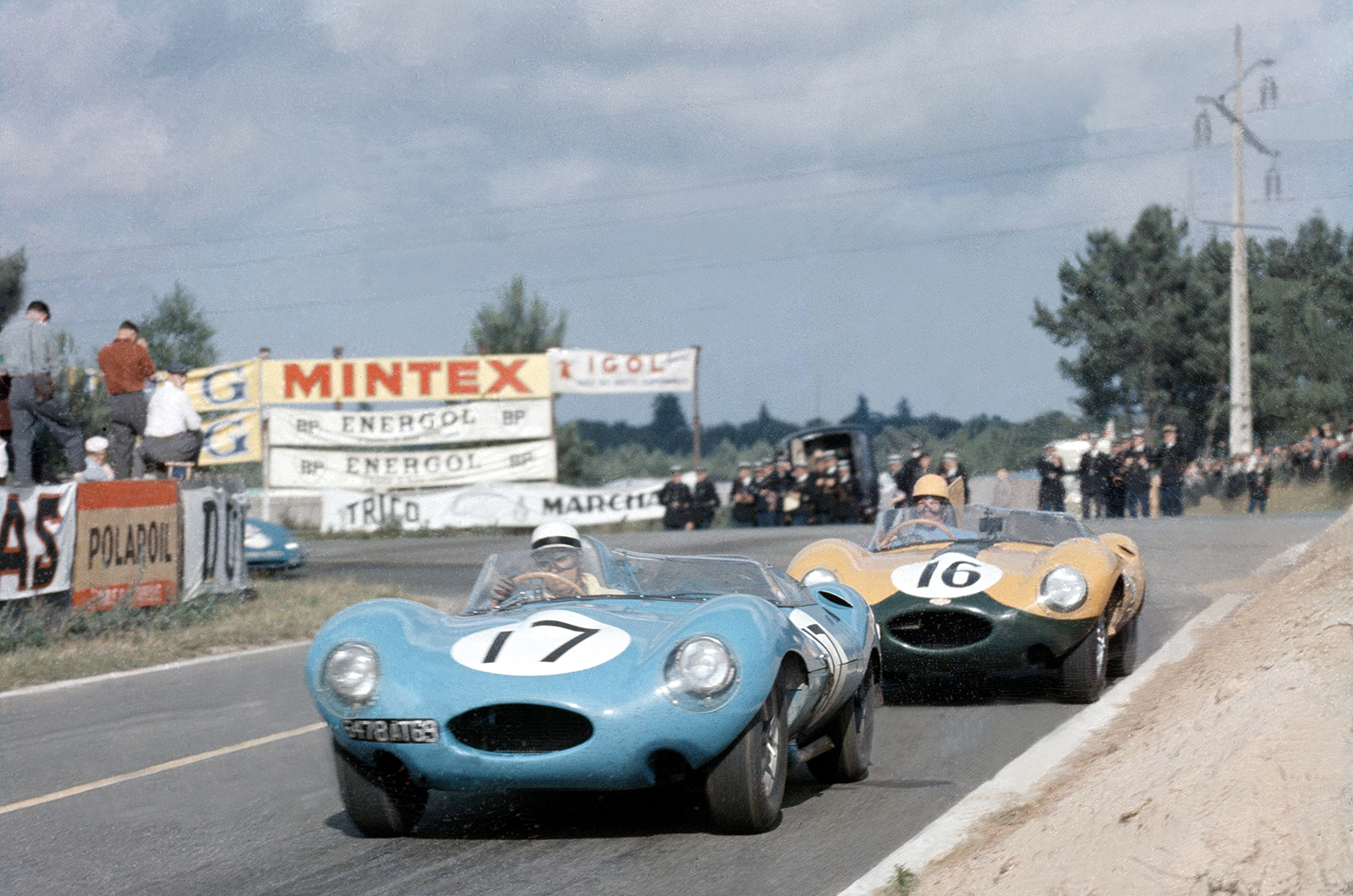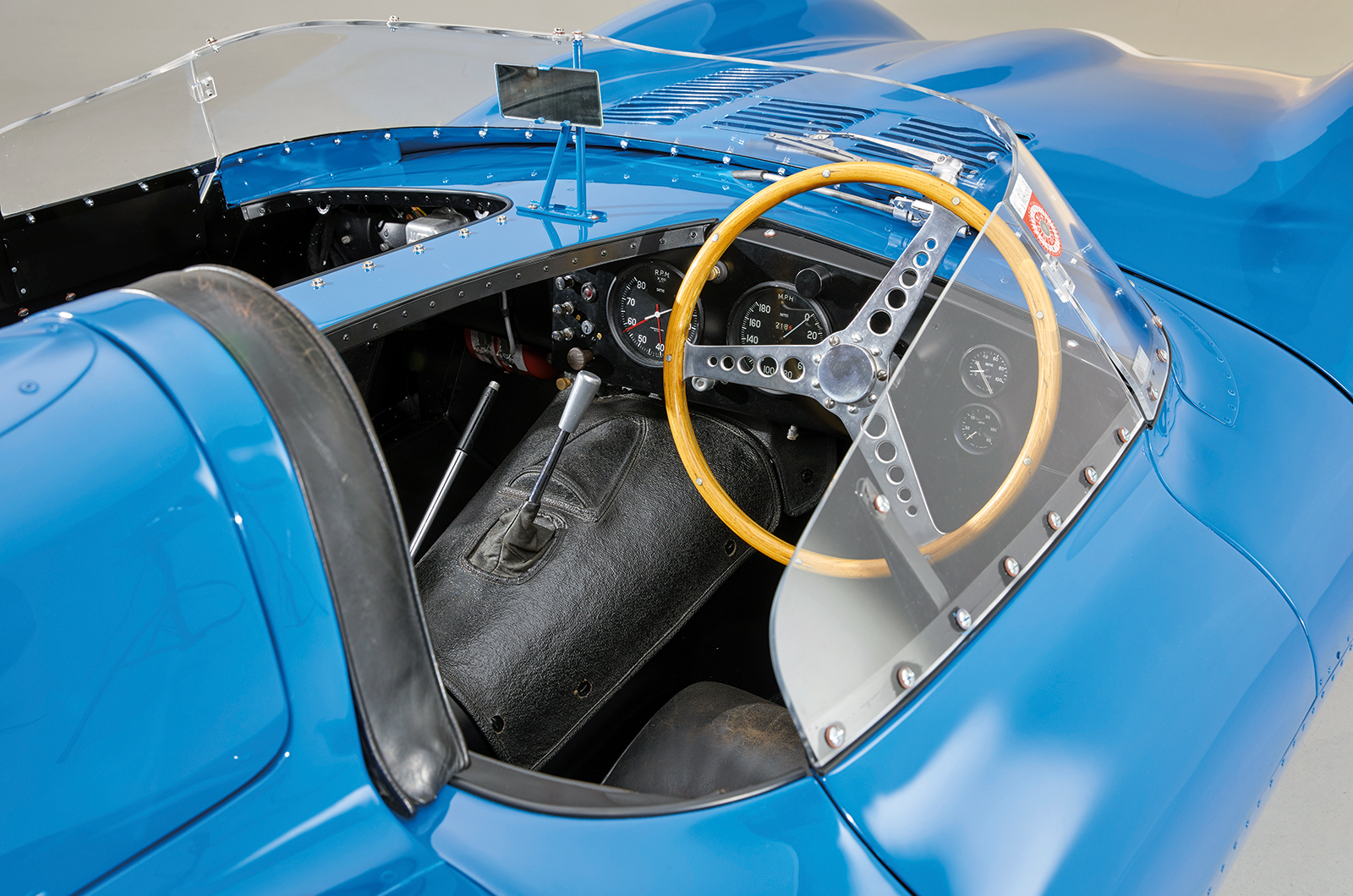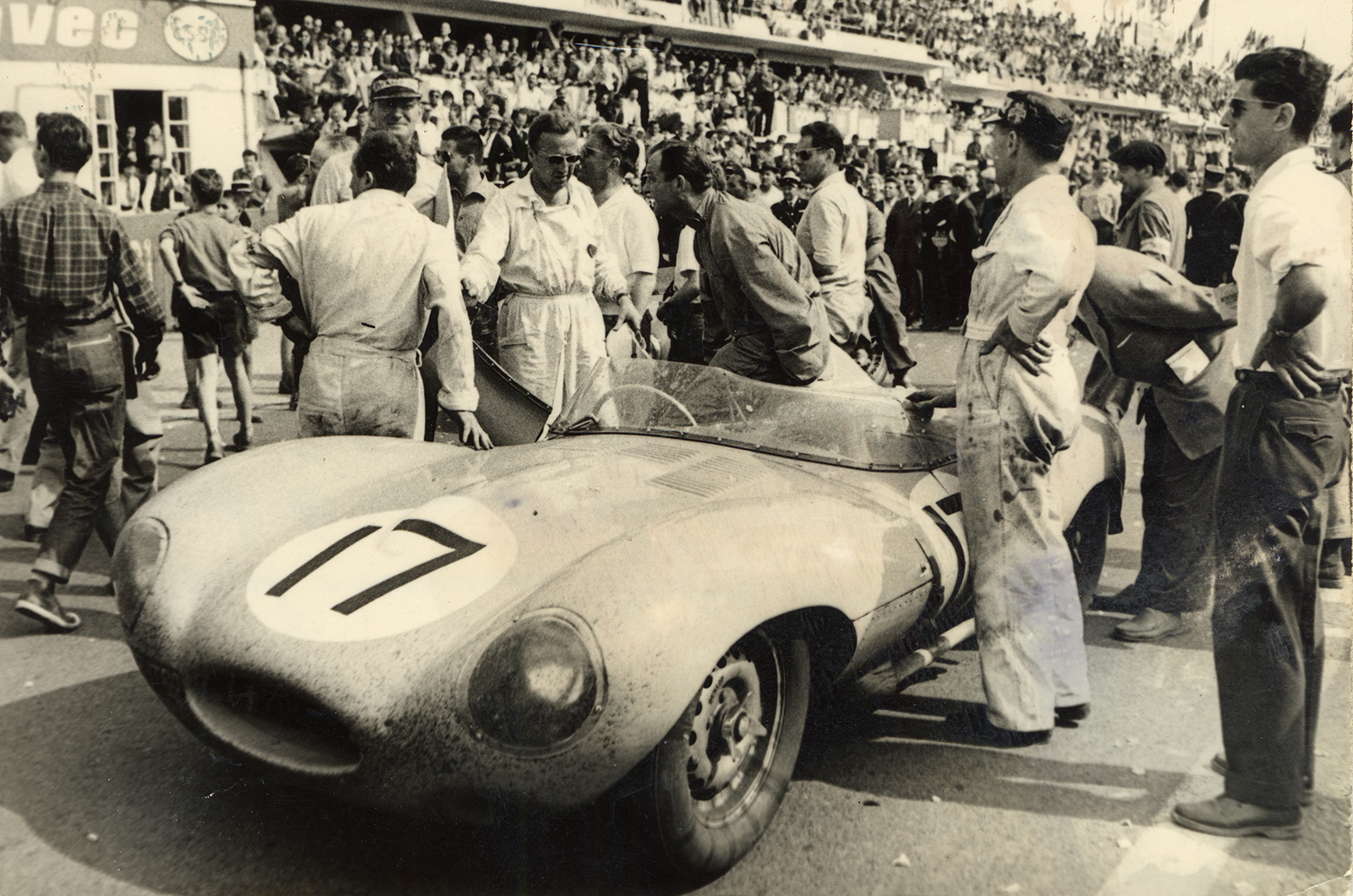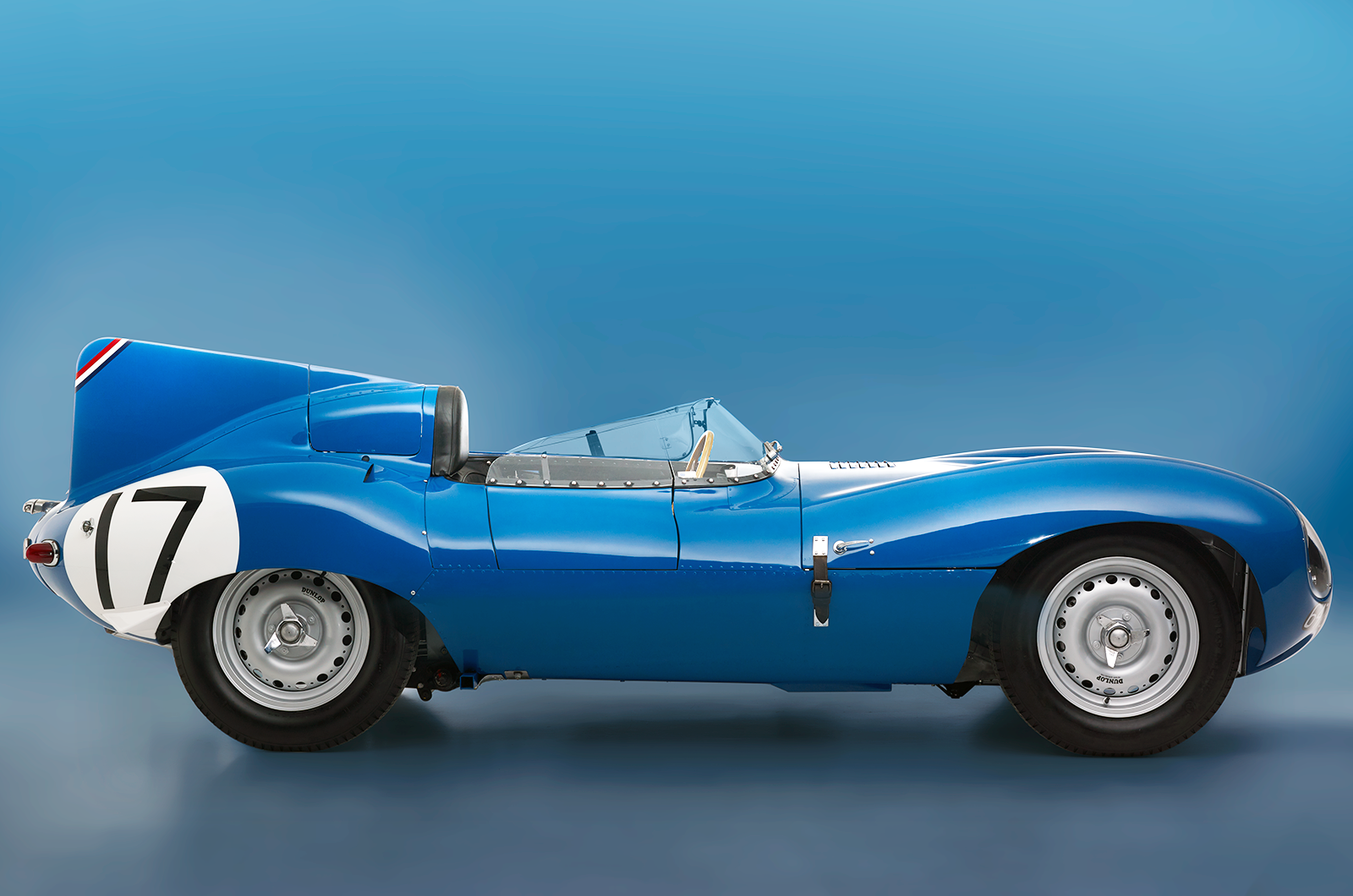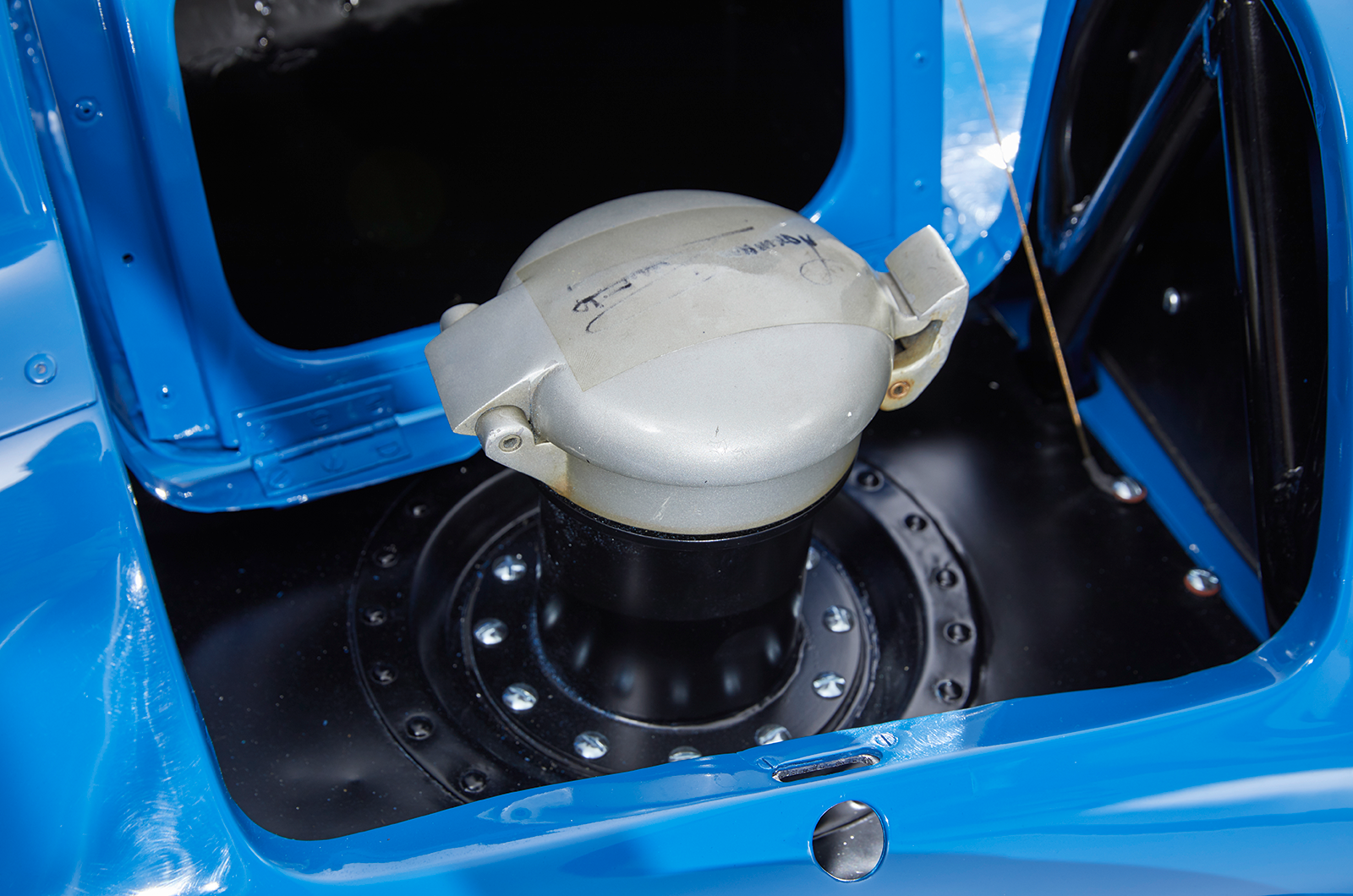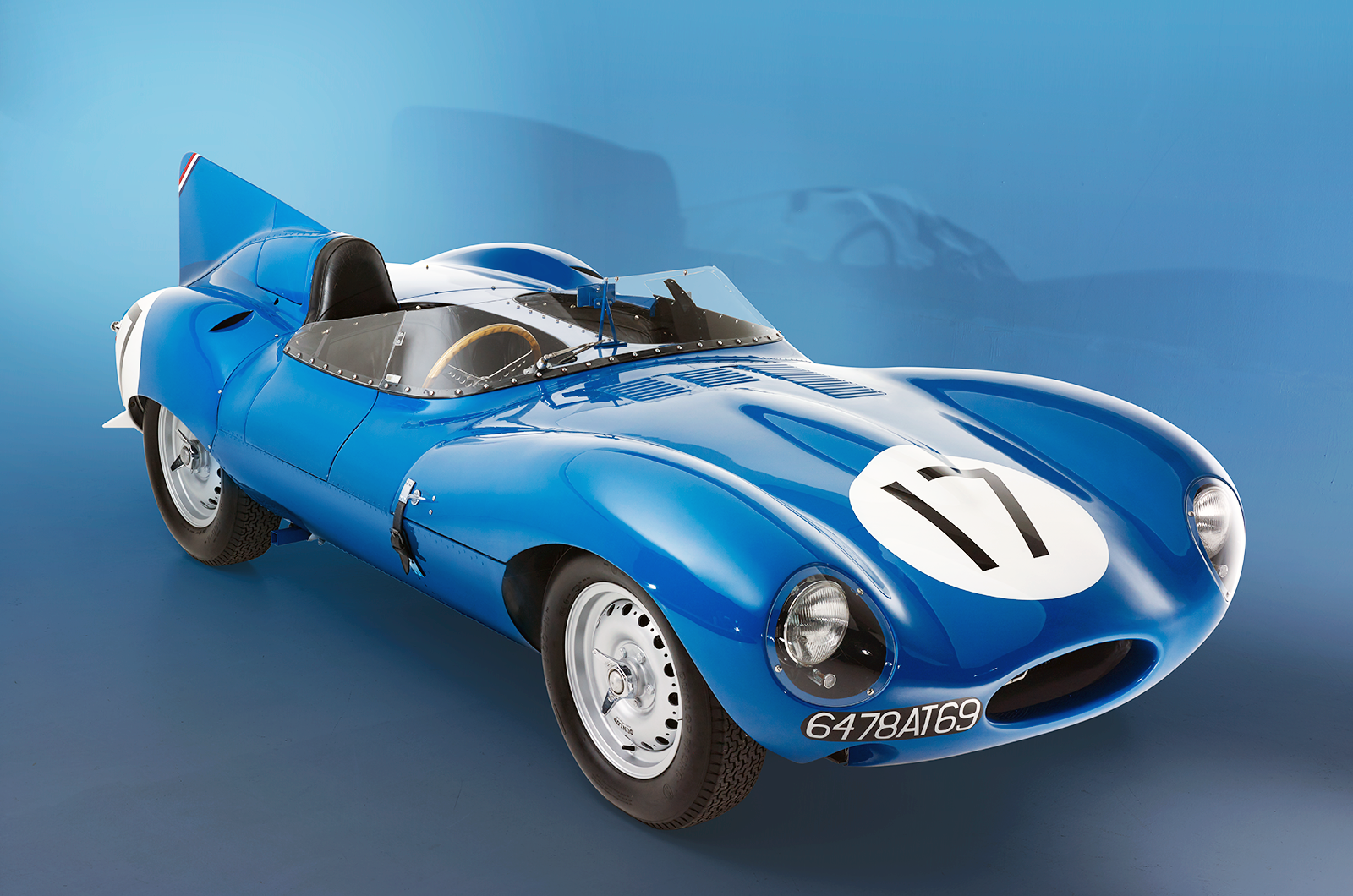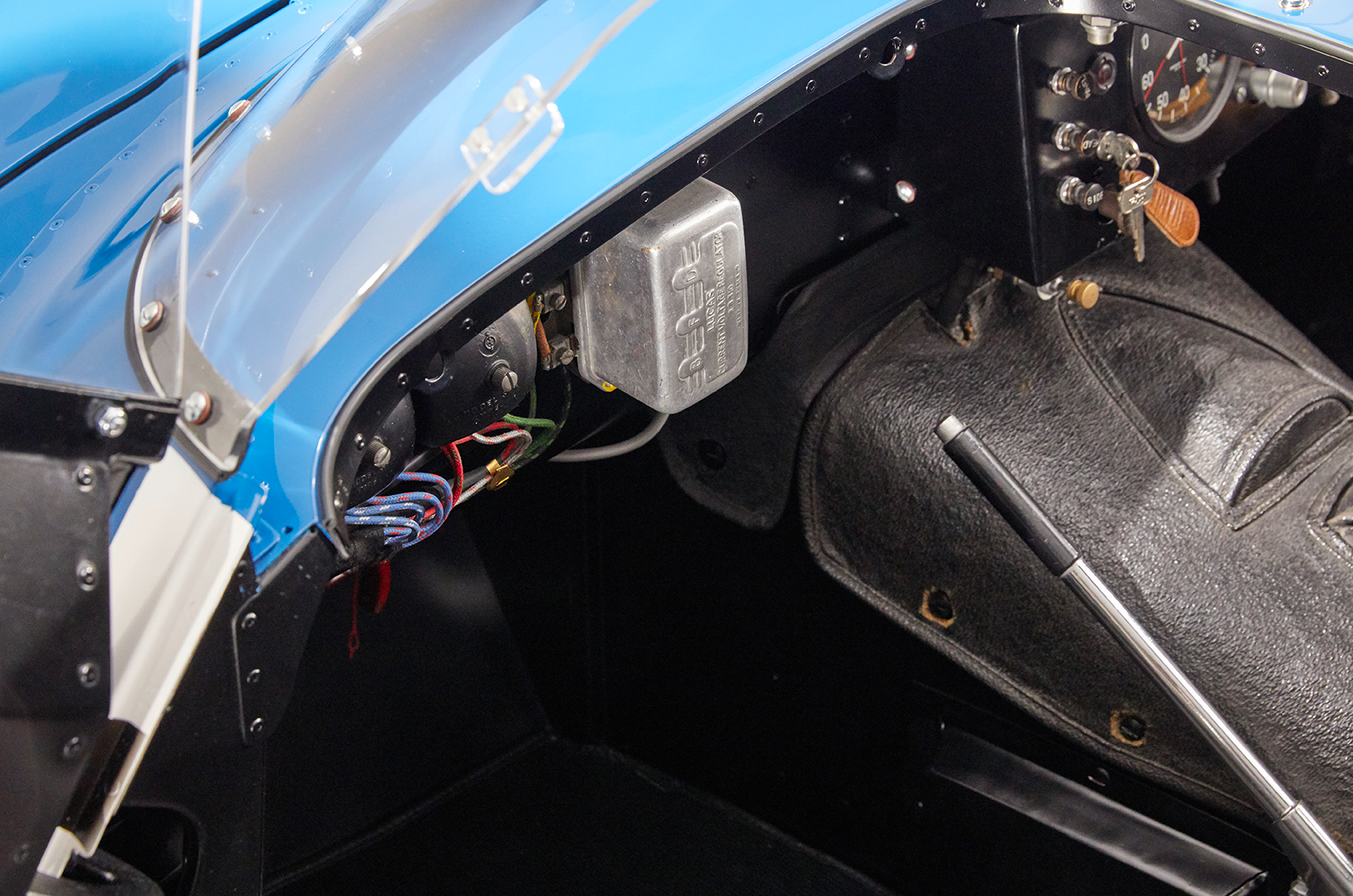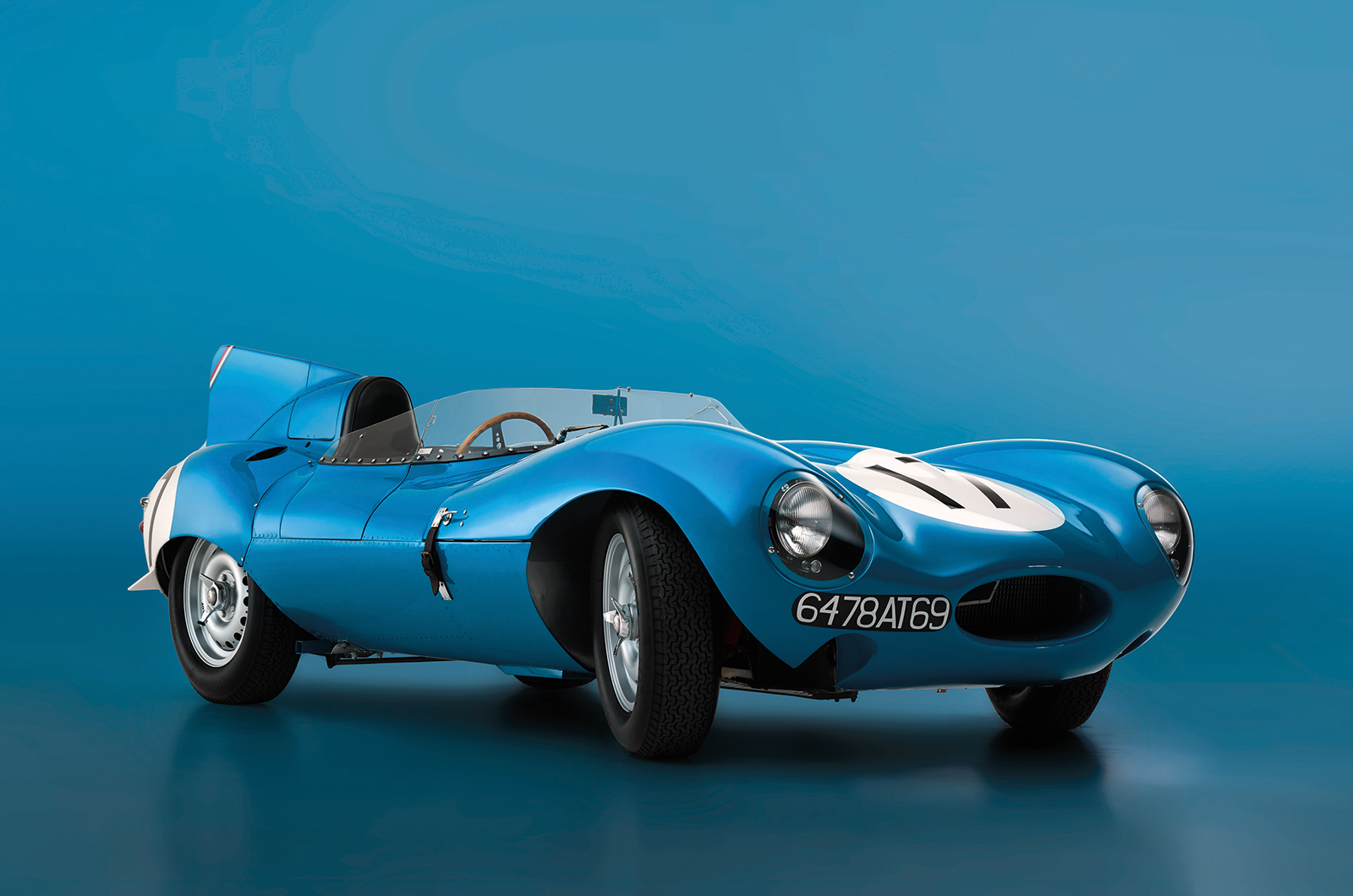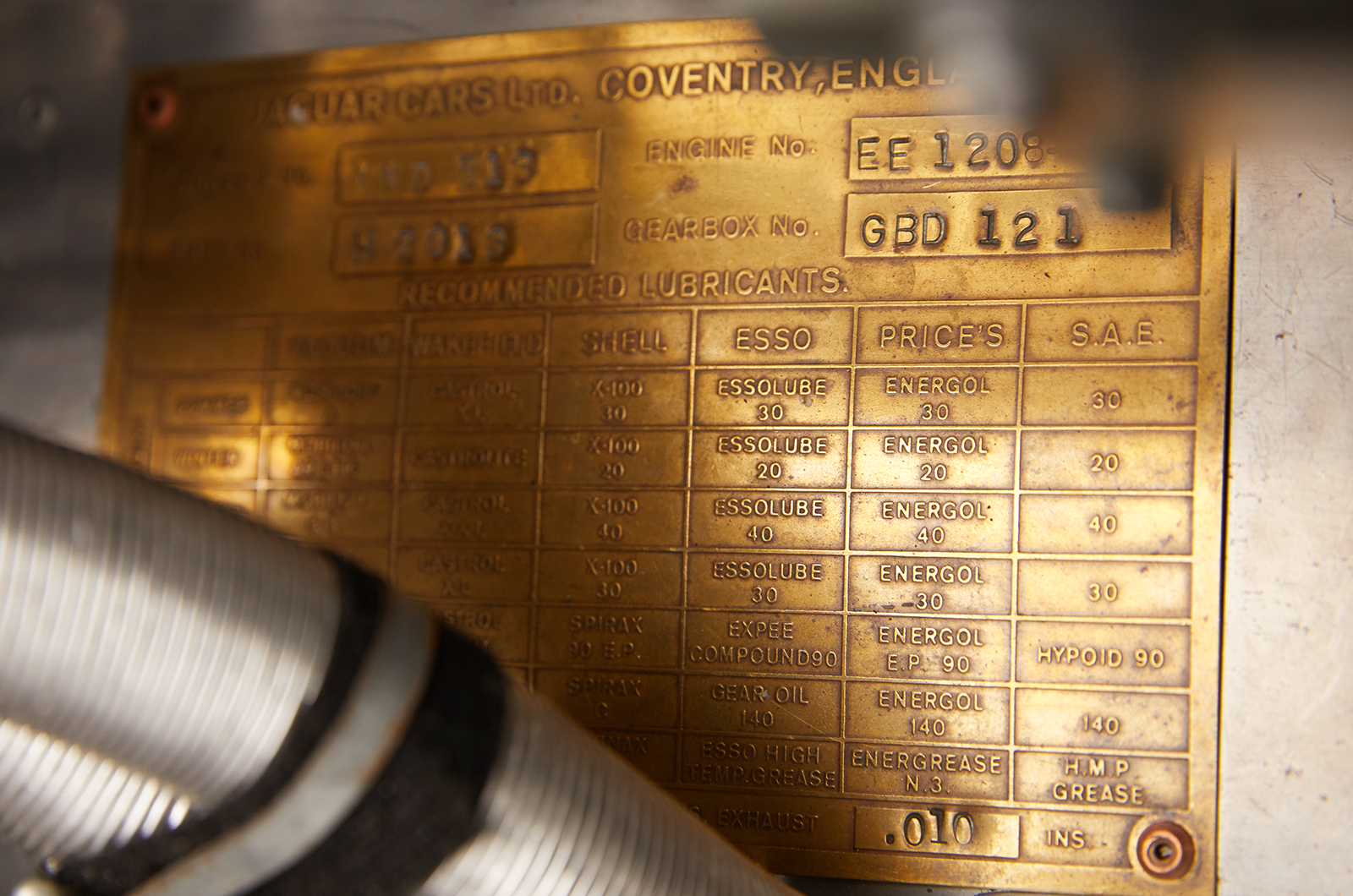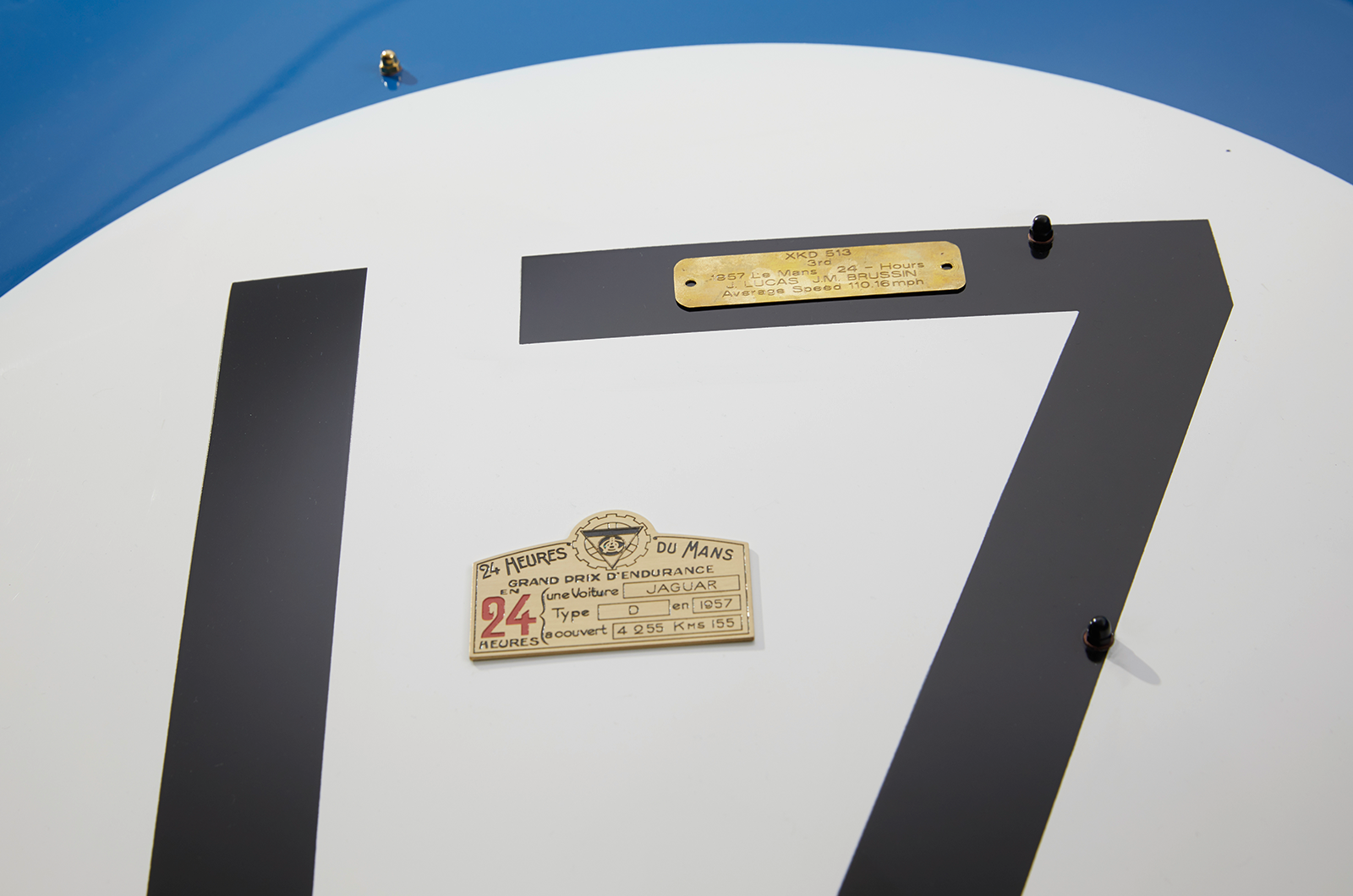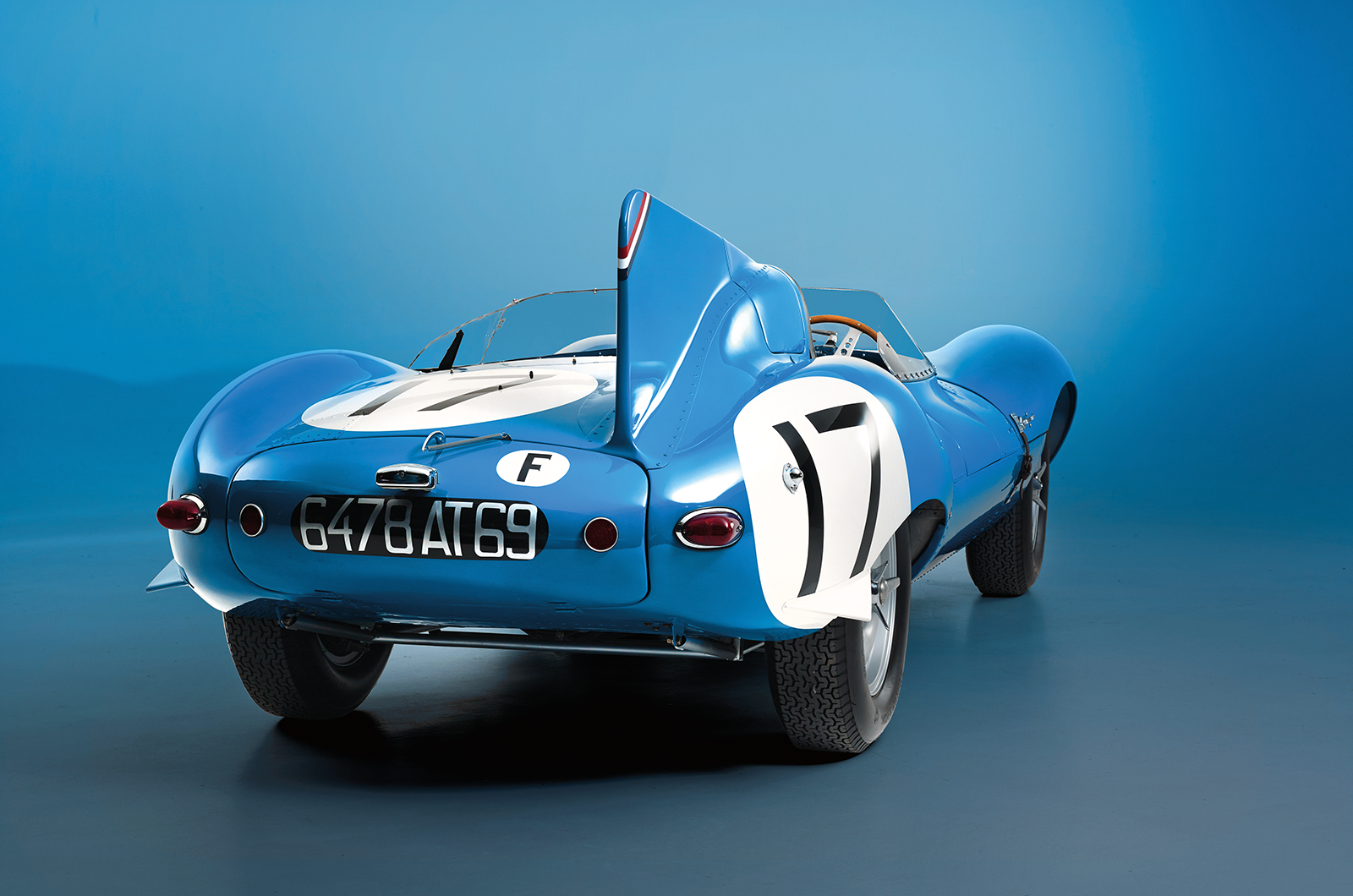Back in England, the handmade body was separated from the original D-type tub and the unfinished rebuild was eventually sold to Laurence Bristow, who instructed Guy Black and Chris Keith-Lucas to complete it.
As well as the subframe and monocoque, the rebuild used many period parts including a complete factory tail section. Finished in original ‘short-nose’ style with a tailfin and 3.8-litre engine, it was predictably painted British Racing Green.
This D-type has been several shades in its life, this restoration recreating a specific point in time
Renowned English collector Bill Lake acquired the Michelotti body and interior, and commissioned Lynx to rebuild it using a written-off 4.2-litre E-type as a donor.
Painted an unflattering red and registered 20 KOG, the finished car was a gift to Lake’s wife, Rosemary.
After display in the Jaguar collection of Roland Urban, the coupé was acquired by Belgian enthusiast Lucas Laureys, who was determined to make it more authentic.
XK Engineering was tasked with rebuilding it to 1963 Geneva show style, including a repaint in powder blue.
Lake had fitted a Mk2 dashboard, but the Coventry specialist went to great lengths to recreate the handmade original.
Few photos survive and Michelotti’s sketches were long lost, so finding reference material was a challenge, but the finished car is a superb tribute to Michelotti, back on 16in centre-lock Dunlops and with a 300bhp 4.2-litre engine rebuilt by Ron Beatty.
Hopefully this D-type will one day race at the Le Mans Classic
The D-type was sold to California-based Briton Peter Giddings, and raced extensively.
Later owner Bob Baker lent it to Road & Track for a group test against a Ferrari 250 Testa Rossa and a Porsche RSK, with Phil Hill, Innes Ireland and Bob Holbert swapping seats around Laguna Seca for the cover of the April 1986 issue.
It passed through the hands of Bill Chizar before Arizona-based Jaguar guru Terry Larson acquired XKD 513, by then painted dark blue.
Over the ensuing 12 years, few had more fun or were more intimate with D-types than Larson, who enjoyed driving his new acquisition as much as fettling it and researching its history.
As well as racing at the Monterey Historics, Larson ran it around America’s greatest routes during the Colorado Grand and the Copperstate 1000.
The three-litre engine has a distinctive character
The D-type was also shipped to Europe for two factory cavalcades from Browns Lane to Le Mans, where Larson began a rewarding friendship with Dewis.
“XKD 513 was my first D-type so the memories are extra special,” says Larson. “I’ll never forget driving the Trail Ridge Road in Colorado: 91 miles and 460 turns up to 9000ft, with very little traffic.
“Norman loved westerns and Clint Eastwood was his hero, so he always enjoyed our tours. We once stopped out on the Greer Prairie for a cattle herd to cross and he was thrilled to see real cowboys.”
Larson eventually sold XKD513 to Fred Bohlander, who repainted it in a lighter blue finished with roundels and the number 17, but in 2001 it returned to Europe with Austrian Dr Hans-Jörg Holleis.
Initially Holleis just enjoyed driving the car, including on the Mille Miglia and in the Goodwood Revival’s 2014 D-type celebration.
This car, XKD 513, was ordered through the Jaguar dealer in Paris
In September 2017, to mark the 60th anniversary of the Le Mans victory, XKD 513 joined the two Ecurie Ecosse team cars, XKD 606 and XKD 603, for a reunion road trip from Coventry to the Concours of Elegance at Hampton Court Palace.
It was a special trip for the Austrian and his brother Günther: the event reunited Dewis with the car, and a conversation about XKD513’s correct blue with Queenie Louwman prompted Holleis to think about a repaint.
Compatriot Egon Zweimüller was enlisted for the job.
“The car came to my workshop after Hampton Court and we stripped it down to the monocoque,” recalls the specialist. “Fortunately, I also had the very original XKD 553, which was the perfect reference.”
Lucky number 17
A lengthy period of research, tracking down historic photos, film and memories made sure the details were authentic.
The owner wanted to retain the finned style and 3-litre specification, but it was decided to stick with the number 17 from its third place in 1957.
“We found colour photos of Dewis testing at MIRA with the ’58 upgrades but still the old lucky number 17,” says Zweimüller, “so that’s the window of history we rebuilt it to. We also discovered it was originally green before the French Blue overpaint.”
During the rebuild, the rivets were removed and replaced with authentic aviation-spec items, and the tailfin was remade to the correct shape.
The ’58-style rear wing vents and the little fins behind the rear arches were also added.
The rear end received aero tweaks for the 1958 24 Hours of Le Mans
The correct blue was a challenge, but eventually a 1955 Glass colour chart gave a clue, with a tone that was later used on the XK140.
Final touches were the hand-painted registration, roundels and tri-colour detail on the tip of the fin.
The completed D-type was extensively tested by Zweimüller, who confirms that the 3-litre engine has a special character: “It still has strong torque but the revvability is better. It’s more like a Maserati 300S and the sound is sharper, too. The uprated six-piston brakes are fantastic, and on smooth roads the handling is superb.”
Its return to La Sarthe was postponed, but hopefully in the future XKD 513 will compete at the Le Mans Classic.
Determined to have one good run in 2020, the Holleis brothers entered the Mille Miglia last October where the Jaguar was enthusiastically applauded by fans.
Images: Johann Wimmer/Zweimüller Cars
Thanks to Egon Zweimüller, Hans-Jörg Holleis and Terry Larson
READ MORE
Ferrari 250 Testa Rossa: Refined to perfection
How brilliant Bertone reimagined the Jaguar XK150
Shrouded in Turin: Frua’s unique Jaguar S-type
Mick Walsh
Mick Walsh is Classic & Sports Car’s International Editor
